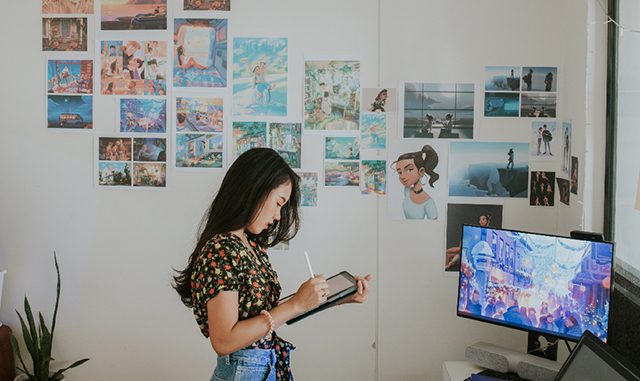
Composition – the arrangement of visual elements in a painting, drawing or photograph – is essential to creating a successful work of art. By composing your work in a way that is appealing to viewers and by using various compositional techniques, you can create an artwork that is both visually pleasing and impactful. When you start your own concept boards it starts with a composition.
The most important part of digital art is learning how to compose your drawing. Composition is what separates the good drawings from the great drawings. Here are eight tips for composing great digital art:
Use a grid. When starting an illustration, draw a grid on it and use that grid to place your objects on the page. Use a ruler to make sure all your lines are straight and even, especially when drawing buildings or cityscapes.
Elements in odd numbers. Odd numbers are used more often in art because it makes the image more interesting than even numbers. It’s also more pleasing to the eye than using even numbers because it creates a sense of balance and harmony for the viewer.
Leading lines. Leading lines can be used in art as a compositional element that guides the viewer’s eye around the illustration by creating paths through which they can follow as they look at each part of an image
Keep things simple. The best way to keep an illustration simple is by not adding too many details or objects into one area that could be distracting to the viewer and ruin their focus on what you want them to look at first. So when starting a new illustration, think about what element(s) should be emphasized and keep everything else minimal.
Here’s the Composition Tips for Digital Arts:
- Use foreground interest to draw the viewer into your image
- Consider using depth of field, especially if you’re shooting close-up
- Simplify the background to help your subject stand out more
- Increase the saturation of your colors, but not too much!
- Reduce the saturation of your colors, but not too much!
- Always think about leading lines and how you can use them to guide the viewer through your image
- Use color to create a sense of harmony in your image
- Use color to create visual tension in your image
I’ve been creating digital art for over 10 years now, and I’ve learned a lot about what makes good art. However, most of the tips I see are ‘general art’ tips that don’t apply well to digital painting. Here’s my list of how to make great digital art:
Don’t be afraid to paint on top of photographs. It takes some skill to do this convincingly, but it can get you good results quickly.
Don’t use photos as a crutch. If you can only make paintings that look like photos, you’re not learning how to paint well.
Use references and/or models for poses and lighting. It’s amazing how many people try to draw without reference material — it’s much easier if you just take advantage of the fact that we live in the age of photography!
On the other hand, don’t use photo references as a substitute for learning drawing fundamentals. You need to know why things look they way they do in order to create something believable with your own style. Click here to see the best composition for your storyboard.
